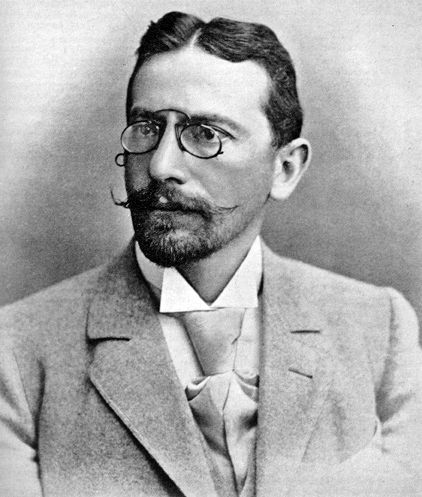
How Your Opponent Will Help You
Siegbert Tarrasch was one of the best players of his time and definitely deserves to be included in the list of strongest chess players who never became world champion.

Just like Reuben Fine, Tarrasch was a prolific chess writer and was even called "Teacher of Germany" for his numerous chess manuals. I bet many of you have heard Tarrasch's famous rule in rook endgames, which states that you are supposed to put a rook behind passed pawns regardless if the pawn is your opponent's or yours.
Also, his immortal "a knight on the rim is grim" saying is something we all learn. Still, there is one of his sayings that is not well known, yet very useful. '
Bobby Fischer even quotes it in his book My Sixty Memorable Games. In the annotations to his game vs. GM Kholmov, Fischer said:
As Tarrasch wrote: "When you don't know what to do, wait for your opponent to get an idea—it's sure to be wrong!"
A game from my recent article is good example.
Magnus Carlsen has been trying to make progress in this endgame for the last 20 moves, but couldn't achieve anything because White's well-placed rook on the back rank kept harassing Black's pieces. There is no way for Carlsen to force the trade of this pesky rook...unless his opponent helps him. Shockingly, Teimour Radjabov voluntarily trades his active rook!
Even after the trade of rooks, the position is still drawish. Again Carlsen has been trying to make progress for 15 moves and again all his attempts were fruitless...until White voluntarily created a target on a4, which was lost nine moves later.
Don't get me wrong, I am not trying to pick on Radjabov, who is an elite grandmaster. To tell you the truth, I don't think any player would withstand Carlsen's trademark pressure in a position like this.
Judge for yourself:
It was not that easy for Black to make progress in the position after 37...Re6, yet Vishy Anand decided to just give up his central e4 pawn.
It is a strange phenomenon, but at a certain point, your opponents are going to help you! Here is one more example:
The move 31...h5? is inexplicable. Why would Black create another weakness for himself? Here is what GM Jonathan Rowson writes about it in his excellent book The Seven Deadly Chess Sins:
It's hard to see what White can do if Black just sits tight. However, for those who never tried it, "sitting tight" can be excruciatingly difficult because it's our natural tendency to want to "do something."
GM Rowson hits the nail on the head! Any experienced chess player knows how difficult it is to do nothing!
Here is my own experience. After a long and complicated game vs. GM Yurtaev, I achieved a fortress that cannot be broken:
The pawn f7 covers my king against any danger and all I needed to do was "do nothing"! Even if my opponent seriously activates his pieces, all I need to do is to protect my f7 pawn.
Here is a typical situation:
What did I actually do in the game? I "activated" the king, pushed the pawn forward as if I wanted to win the game, and lost miserably! It is still difficult to explain why I did this, considering that in those pre-historic times we didn't have a sudden-death time control, so I was getting one whole hour for each 16 moves after we reached the time control on move 40!
Of course even after I moved the pawn it was still a draw, but it wasn't an unbreakable fortress anymore.
I guess it is only proper in conclusion to quote the famous The Art of War by Sun Tzu.

If you wait by the river long enough, the bodies of your enemies will float by.



